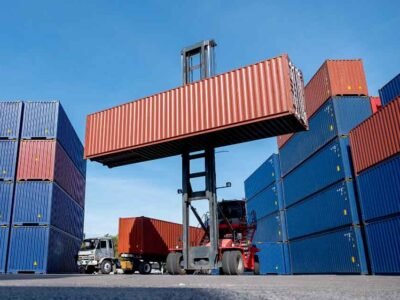While it seems highly technical, geofencing has become an extremely important facet for businesses. It is a location-based intelligence application that can build a virtual fence around a defined geographical area. This helps businesses keep a track on users leaving or entering said area, and hence the term geofencing.
What is geofencing?
Geofencing is a powerful technology that allows businesses to apply an invisible or virtual fence to a geographical location. They can then collect data on users or customers that are already part of its operations. Geofencing involves drawing a shape like polygon, circle, or square on a map to designate a specific zone. Whenever a business transaction occurs in that zone, that location-based information is then picked up by companies and can be used for their business operations.
Geofencing utilizes location-based data through technologies like RFID, GPS, Wi-fi from mobile devices to recognize and report movement data. It then shares the relevant data to the person supervising when someone exits or enters a particular geofenced location.
Example of geofencing in real-life:
If a customer walks into a retail outlet to buy something, geofencing allows businesses to provide customers relevant messages about store products and in-store promotions. This may help stores to improve walk-in traffic and boost conversions.
What are the industries that use geofencing?
- Logistics and transportation
- Last-mile delivery
- Fleet management
- Healthcare
- Hospitality
- Emergency services
- Manufacturing
- Banking and financial services
- Retail industry
- Home services
- Food and beverages
- Travel and tourism
- Technology, IT and software
How geofencing technology helps companies to optimize their businesses operations
As COVID-19 continues to form the backdrop of our daily lives, mobility has turned out to be the most essential aspect for all businesses looking to optimize their business operations. As more of them began to work with a mobile workforce, there has been a growing need for tracking their on-ground progress. Find out how geofencing is enabling various businesses to optimize their operations.
Monitoring vehicle activity
Logistics and transportation businesses can effectively track their fleets’ activities by marking their effective radius of operation with the help of geofencing technology. Riders who leave a geofenced zone before the completion of their tasks can be alerted or notified. It also enables fleet managers to apply zone-based routing.
But what exactly is this zone-based routing?
As a fleet management company, there may be delivery zones where you have to handle high delivery volumes consistently and there are others where they are volatile. Using geofencing applications, a fleet manager can divide delivery zones based on delivery constraints, volume, vicinity, delivery windows etc. This helps them build optimal delivery schedules for drivers and also help achieve the on-time delivery targets.
Inventory management
Inventory management becomes challenging especially when warehouse managers aren’t able to consolidate their inventory from different locations. With geofencing applications, businesses can effectively streamline their inventory spread over multiple geo-locations.
Improves last-mile delivery planning
In the last-mile delivery, there are many tasks like field service, or after sales service, etc that require drivers with specific knowledge of a delivery zone. Geofencing helps companies involved in the last-mile to assign the tasks factoring in the vicinity of the location, a driver’s knowledge of a delivery area and delivery volume, all of which improves last-mile delivery planning.
Tracking entry and exit time of a physical premises
With notifications provided by geofencing applications, businesses can track the entry and exit time of each stakeholder. This enables them to not just track footfalls across a certain area, but also verify whether their new discounts or offers have made an impact.
Protect highly-sensitive areas
Some high-traffic and high-footfall areas like tourist spots could be detrimental for making on-time deliveries and these places are called highly-sensitive. With geofencing applications, an organization can block access to such areas. Even if there is a breach, geofencing applications can alert the managers and stakeholders of that area.
Manufacturing sector
Productivity matters a lot for manufacturing companies. They want to know how much time their employees spend in a factory, or production centers. More than that it helps them calculate unproductive hours and minimize it.
With geofencing applications, manufacturing units can track the number of working hours their workforce spent on the premises and compare it with their total output. This gives them a clear idea of time management issues of employees and rectify them or bring changes in the timings such that the productivity is increased.
Minimizes equipment theft
A big challenge for many centralized or decentralized warehouses is equipment theft. Using geofencing applications, warehouse businesses can closely track equipment theft or misplacement. This enables them to keep their warehouse safe and elevate the efficiency of coordination of the warehouse operations.
Conclusion
Consumers are spending a large amount of time on devices like smartphones and tablets, and it is highly beneficial for businesses to engage with those customers on these devices. Integrating geofencing technology into business operations is the most suitable option to communicate with potential customers, boost sales and widen their customer base. This technology is a tried and tested one by many product managers to improve customer engagement and maximize customer loyalty, and should be taken seriously by anyone wishing to explore new growth opportunities.












